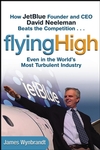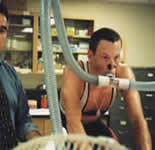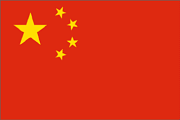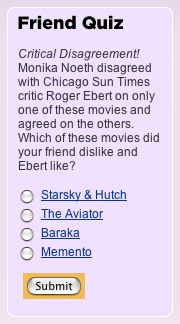“There can be no successful monozukuri (making thing) without hito-zukuri (making people).”
from the The Toyota Production System.
“There can be no successful monozukuri (making thing) without hito-zukuri (making people).”
from the The Toyota Production System.
More notes from Flying High:
Also notable for the approach of culture fueling product is this quote from Gareth Jones, VP, Corporate Communications about their competition…
Song isn’t the success you might have heard it is from Delta. We’ve trounced them on any route we’ve shared. They copied the wrong things. They copied the obvious. They don’t focus on the human experience…they focused on the cosmetic. Ted is United with a different coat of paint.
 Just finished James Wynbrandt’s Flying High: How JetBlue Founder and CEO David Neeleman Beats the Competition… Even in the World’s Most Turbulent Industry. I’d give it 3 stars out of 5 for being engaging enough to finish (something I rarely do anymore) and educational while a little light in critical point of view. Wynbrandt is clearly a fan, and he lays on the cheerleading a little heavy at times.
Just finished James Wynbrandt’s Flying High: How JetBlue Founder and CEO David Neeleman Beats the Competition… Even in the World’s Most Turbulent Industry. I’d give it 3 stars out of 5 for being engaging enough to finish (something I rarely do anymore) and educational while a little light in critical point of view. Wynbrandt is clearly a fan, and he lays on the cheerleading a little heavy at times.
Part I of some notes:
 It turns out that intense, long-term cardio training actually enlarges the heart and therefore the amount of oxygen-rich blood that can be delivered to the muscles, according to this long-term study at the University of Texas…
It turns out that intense, long-term cardio training actually enlarges the heart and therefore the amount of oxygen-rich blood that can be delivered to the muscles, according to this long-term study at the University of Texas…
Lance Armstrong…improved his cycling efficiency by a phenomenal 8% as he matured from age 21-28 years… There is no doubt that Lance now possesses a big and strong heart that can beat over 200 times a minute at maximum and thus pump a exceptionally large volume of blood and oxygen to his legs. There are probably 100 other men on earth who have comparable abilities while each assumedly must have performed intense endurance training for at least 3 years and are now between the ages of 18-40 y. In testing hundreds of competitive cyclists over 20 years at UT, Dr. Coyle has found two other individuals with the physiological potential of Lance.
An additional factor in Lance’s improvement over the years is that he has learned how to reduce his body weight and body fat by 10 pounds (5 kg) prior to each of his victories in the Tour de France. Therefore, over all his power per kg of body weight has increased 18% while climbing-up the steep mountains in France.
There’s definitely a metaphor here for business, as companies that excel over time consistently apply themselves to excellence until it is rooted in their culture and not just the occassional project success.
If you’ve only seen Gordon Ramsay as the Donald Trump figure in Hell’s Kitchen, you’re missing out on what he really has to teach. In Ramsay’s Kitchen Nightmares on BBC he goes into a slumping restaurant and tries to turn it around in one week. As a manager he can see the whole system: kitchen, menu, balance sheet, product portfolio, interior design, customer service… sometimes he’ll even do wayfinding analysis. As a leader he uses a variety of approaches to teach, from jokes to insults. And while his get yer fookin’ bullocks goin’ style probably only works in the kitchen or construction sites, his sense of management is impressive. Fookin’ brilliant.
If you don’t get BBC/BBC America, I hear it might be out there on the internet somewhere (ahem).
Thanks to Scooter for pointing it out.
I’ve found the Agile Development community has a lot in common with the user-centered design community, and their methods — especially the spirit of them — is closely aligned. In case you haven’t been following their evolution, many different methods from Scrum to Extreme Programming sprang up and, seeing commonalities among them, the founders came together to write the Agile Manifesto and form the Agile Alliance. Soon project managers caught the bug, adopted the practics and just recently formed the The Agile Project Leadership Network (APLN) which incidentally is structured much like the Information Architecture Institute.
The APLN’s core principles reaffirm the human-centeredness and agility of their predecessors:
In order to consistently deliver successful results, great project leaders embrace the following practices:
- Relentlessly Focus on Value. Focus efforts on generating organizational value rather than managing tasks.
- Be Situational Specific. Use situationally specific strategies, not a one-size-fits-all approach.
- Manage Uncertainty. Manage uncertainty through client focused collaborative exploration and proaction.
- Continuously Align to Changing Situations. Choose strategies for leading within a dynamic environment.
- Lead with Courage. Confront reality with conviction and a dedication to purpose.
- Build Strategies that Leverage People. Challenge team members with opportunities to grow professionally.
- Design Strategies Based on Teamwork. Devlop and sustain a collaborative team environment.
- Communication Through Immediate and Direct Feedback. Maintain control through feedback, not prescriptive plans.
I’ve heard some skepticism towards business design, which is healthy and quite justified given that no one has shown concrete examples of it yet. One reason for this is that examples are difficult to describe; the application of design thinking to business situations is highly contextual and — as the name states — has much to do with how people think.
I recently encountered a situation where I thought design thinking could improve a problem-solving process. It’s small and simple, but often difficult to put into practice because it challenges the way organizations work.
Let’s say a mail order company’s Customer Service group reports that an usually high number of products are being returned. Someone in management might request some data and generate a hypothesis about what is happening. Then they might come up with an idea for fixing it and implement the idea. Or, maybe two good ideas are analyzed and the better one is implemented, thusly:

Another way to process this problem is to consciously inject elements of design thinking into it. Starting with the data, the manager could collaborate with a partner or a team and use creativity techniques to abductively generate several hypotheses for what is causing the unusually high number of product returns. They could then run an experiment and test the best hypotheses with customers to understand the unique and personal issues behind the problem. With both quantitative and qualitative information in hand, the team starts to integrate this information and interpret it while creatively generating a number of possible solutions. The solutions are analyzed for potential and tested with customers, and the best one is launched.

The second approach is unquestionably more work, but strives to find a better answer with less risk. Remaining agile is all in the execution.
This isn’t new or radical thinking, it’s just new and radical for organizations whose cultures are suffering and need to change.
Strong Lattes, Sour Notes at Starbucks: Starbucks’ adventures in media bars aren’t playing out as planned
BusinessWeek, June 20, 2005
At Starbucks, a Blend of Coffee And Music Creates a Potent Mix: Chain Boosts Sales and Careers As It Co-Produces, Offers Selected CDs in Its Stores
Wall Street Journal, July 19, 2005
I was just thinking it would be great to have summaries of all those books I’ll never get to read, and of course someone has done that already. But this company is emphasizing the variety of formats they offer, when I bet business people would most prefer a bound collection of these published once per quarter.
Given the destructive human rights situation in China, how do we decide to interact with companies there? I don’t think no action is a choice; the sheer amount of influence the Western world and China exerts on each other through commerce alone makes it impossible for any one person or company to remain unaffected.
Free marketers like the Cato Institute argue that “America should not play the dangerous game of pitting human rights activists against free traders. American prosperity and global prosperity are better served by open markets than by well-intended economic sanctions.” But this does nothing to address the human rights problems, and we know that ‘all it takes for evil to triumph is for good men to do nothing.‘
And there’s no doubt we should be careful about it, as even seemingly innocuous efforts like Yahoo!’s can draw undesirable attention.
One option is to exert pressure politically. The U.S. government is already doing this to a limited extent. But given we cooperated much less with the communist Soviet Union and apartheid-ridden South Africa, it’s surprising we cooperate so much with communist, oppressive China. Politicians could use this issue in order to embarrass opponents for their cow-towing China-friendly behavior, but given the reflexivity of the dollar that’s a long shot. A subtle variation on this would be to embarrass anyone not willing to reduce our debt because it’s handing control of our economy to Asia, which in turn will give us more leverage with Asia on issues like human rights.
 In all the hoo-hah about China’s economy we almost never hear of the human rights situation there anymore. The reason is not that the situation has vastly improved, in fact it’s compared to South Africa’s apartheid. I’m reminded of economic bubbles past when big money clouded our view of everything behind it.
In all the hoo-hah about China’s economy we almost never hear of the human rights situation there anymore. The reason is not that the situation has vastly improved, in fact it’s compared to South Africa’s apartheid. I’m reminded of economic bubbles past when big money clouded our view of everything behind it.
Human Rights Watch still knows what’s up. Their backgrounder on China is disturbing, and includes…
Most of the companies I’ve worked for have refused to work for one company or another, citing objections to the harm done by, for example, tobacco, alchohol or the defense industry. So I have to ask, if China was a company, would you work for it?

In GM’s Design Push Picks Up Speed David Welch profiles Bob Lutz’s struggle to balance the priorities of accounting, engineering and design in an enterprise. This bit pressed the clutch down in my brain:
One of the first things Lutz did on arriving in September, 2001, was push designers and engineers to stop fighting and start collaborating. Now, when the two sides butt heads, they get together in weekly meetings to hammer out their differences. “It isn’t a love-in,” says chief designer Ed Welburn. “But in the last two or three years the laws of physics have changed.”
Now I realize this is a huge company, and the projects run for years, but we all know from having done this work that once-a-week meetings doesn’t count as teamwork. At the Skunkworks for example draftsmen and engineers worked in ajoining rooms, close enough to shoot rubber bands at each other. This helps people generate ideas and sort out issues while in the synthesis frame of mind, rather than the review frame of mind. Hopefully GM’s weekly meetings are a step towards richer interaction.
Tom Peters just released his Re-Imagine Manifesto, Tomato TomA[h]to (.pdf) which captures the spirit of the book series and probably most of what he’s saying these days (and how he’s saying it). Such as…
They say, “If it can’t be precisely measured then it isn’t real.” [And I suppose if it can be measured it is real? Think Enron? Adelphia? WorldCom?”]
I say, “If it can be precisely measured it isn’t real.” [Think Age of Intagibles & Relationships.] [Think: “He knew the price of everything and the value of nothing.”]
An AIGA/Apple Store event…
As designers, we have an extraordinary capacity to help any organization rethink and reinvent itself from within. Yet many of us unwittingly limit ourselves — by assuming that our value is limited to adding design at the end of strategic thinking, as a byproduct, or by focusing too much on artifacts, rather than the experience we want to create. In their presentation, three leaders from Stone Yamashita Partners will challenge us to change the conversation about design. They will argue that we can add extraordinary value to our businesses and our lives if we rethink our attitude to our craft, and start to consider it much more holistically. Drawing on case studies from companies such as HP, Nike, Gap, and eBay, they will argue that design can be central to the conversation in any business, and a powerful force for change.
Wednesday, July 20, 6:00 pm at the Apple Store, One Stockton Street, San Francisco. More info.
Karl, in The hidden value in Netflix, points out that Netflix has… 345 Million movie ratings… Netflix gains a valuable resource that is hard to duplicate, that is almost the dictionary definition of a “strategic resourceâ€, or a resource that can lead to a sustainable competitive advantage.
Now Netflix is going beyond recommendations in using those ratings, combining them with its social network and other data already licensed…

